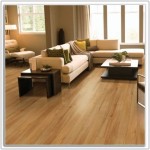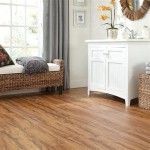Dark Wooden Floor Ideas: Enhancing Interior Design Across Styles
Dark wooden floors offer a striking visual element in interior design, providing a blend of sophistication, warmth, and timeless appeal. The rich tones of dark wood create a grounding foundation for a variety of design aesthetics, from minimalist modern to classic traditional. Selecting the right type of wood, finish, and accompanying décor is crucial to achieving a cohesive and visually appealing space. Dark wooden floors are not a monolithic choice; the spectrum of shades, grains, and textures offers diverse possibilities for homeowners and designers alike.
The inherent benefits of dark wooden floors extend beyond aesthetics. They tend to conceal dirt and minor scratches more effectively than lighter wood tones, contributing to a perception of cleanliness and reducing the frequency of required cleaning. However, dark floors can also highlight dust particles, so a regular cleaning routine remains essential. Furthermore, dark wood acts as a neutral backdrop, allowing furniture and accessories to stand out, making it a versatile choice for evolving interior design preferences.
The installation of dark wooden floors requires careful consideration. Lighting plays a critical role in maximizing the visual impact of dark wood. Without adequate natural or artificial light, a room can appear smaller and darker than it actually is. Strategic placement of light sources and the incorporation of lighter wall colors can help counteract this effect, creating a balanced and inviting atmosphere.
Understanding the Nuances of Dark Wood Species
The selection of wood species significantly impacts the overall look and feel of a dark wooden floor. Different types of wood possess unique grain patterns, hardness levels, and natural color variations, all of which contribute to the character of the finished floor. Popular choices for achieving a dark finish include walnut, ebony, and stained oak or maple.
Walnut, known for its rich, chocolatey brown hue and distinctive grain patterns, offers a luxurious aesthetic. Its natural darkness requires less staining than lighter woods, preserving the wood's inherent beauty. Walnut is also a relatively stable wood, less prone to warping or cupping, making it a durable choice for flooring.
Ebony, a naturally dark and dense wood, represents the epitome of sophisticated flooring. Its deep, almost black color provides a dramatic and elegant backdrop. However, true ebony can be quite expensive and challenging to source sustainably. Consequently, many homeowners opt for dark-stained alternatives to achieve a similar visual effect.
Oak and maple, while lighter in their natural state, can be effectively stained to achieve a variety of dark shades. These woods are readily available and more affordable than walnut or ebony. The grain pattern of oak, whether red or white, becomes more pronounced with a dark stain, adding visual texture to the floor. Maple, with its finer grain, offers a smoother, more uniform appearance when stained dark.
The choice of wood should also consider the existing architectural style of the home. For traditional homes, a richly stained oak or walnut might be a suitable choice, reflecting the classic elegance of the space. Modern homes might benefit from the sleek, uniform appearance of dark-stained maple or the dramatic contrast of ebony alternatives.
Selecting the Right Finish for Durability and Aesthetics
The finish applied to a dark wooden floor not only enhances its appearance but also provides crucial protection against wear and tear. Different types of finishes offer varying levels of durability, sheen, and maintenance requirements. Common choices include polyurethane, varnish, oil-based finishes, and wax.
Polyurethane is a popular choice for its durability and water resistance. It forms a hard, protective layer on the surface of the wood, shielding it from scratches, stains, and moisture. Polyurethane is available in various sheens, from matte to high-gloss, allowing homeowners to customize the appearance of their floors. However, polyurethane can be difficult to repair, and scratched areas may require refinishing the entire floor.
Varnish, similar to polyurethane, provides a durable and protective finish. It offers good water resistance and is available in different sheens. Varnish is generally more flexible than polyurethane, making it less prone to cracking. However, it can be more susceptible to yellowing over time, particularly with oil-based varnishes.
Oil-based finishes penetrate the wood, enhancing its natural color and providing a soft, matte sheen. Oil-based finishes are relatively easy to repair, as scratches can often be touched up without refinishing the entire floor. However, oil-based finishes offer less protection than polyurethane or varnish and require more frequent maintenance, such as re-oiling.
Wax finishes provide a natural, low-sheen look and are relatively easy to apply and repair. However, wax offers minimal protection against water and stains and requires frequent waxing to maintain its appearance. Wax finishes are best suited for low-traffic areas where aesthetics are prioritized over durability.
The choice of finish should consider the intended use of the space and the homeowner's lifestyle. For high-traffic areas, such as hallways and kitchens, a durable finish like polyurethane or varnish is recommended. For bedrooms or living rooms, where durability is less of a concern, an oil-based or wax finish might be a suitable choice.
Complementing Dark Wooden Floors with Interior Design Elements
Dark wooden floors provide a versatile foundation for various interior design styles, but careful consideration must be given to the selection of wall colors, furniture, and accessories to create a harmonious and balanced space. The key is to create contrast and prevent the room from feeling too dark or heavy.
Wall colors play a crucial role in either complementing or contrasting with dark wooden floors. Light and neutral colors, such as white, cream, beige, and light gray, provide a refreshing contrast, brightening the room and preventing it from feeling too enclosed. These lighter hues also enhance the architectural details of the space, drawing attention to the clean lines and textures.
Bold and saturated colors, such as jewel tones or deep blues and greens, can create a dramatic and sophisticated look. These colors work well in rooms with ample natural light, as they can absorb light and make the room feel cozier. However, it is important to use these colors sparingly, as too much saturation can overwhelm the space.
Furniture choices should also consider the dark tone of the floors. Lighter-colored furniture, such as white or cream sofas, light wood tables, and natural fiber rugs, provide a visual contrast, preventing the room from feeling too dark. Incorporating metallic accents, such as brass or silver, can add a touch of glamour and reflect light, further brightening the space.
Rugs are essential for defining different areas within a room and adding texture and warmth. Light-colored rugs with intricate patterns can break up the expanse of dark wood and add visual interest. Alternatively, rugs with bold colors and geometric designs can create a focal point and add personality to the room.
Accessories, such as artwork, lamps, and decorative objects, provide opportunities to add pops of color and personality to the space. Light-colored artwork with contrasting frames can brighten the walls and draw attention to the artwork. Lamps with light-colored shades can provide ambient lighting, creating a warm and inviting atmosphere.
The interplay of light, color, and texture is essential for creating a balanced and visually appealing space with dark wooden floors. By carefully considering these elements, homeowners can transform their rooms into stylish and inviting havens.
Ultimately, the successful integration of dark wooden floors into interior design depends on a holistic approach that considers the specific characteristics of the wood, the chosen finish, and the interplay of complementary design elements. Through careful planning and execution, dark wooden floors can serve as a transformative element, enhancing the aesthetic appeal and value of any home.

35 Gorgeous Ideas Of Dark Wood Floors That Look Amazing

Dark Hardwood Floors That Bring Life To Your Home

Kitchen Dark Hardwood Floors Design Photos And Ideas Dwell

Designer Tips Dark Wood Flooring Ideas Hardwoodfloor

What Furniture Goes With Dark Wood Floors Calgary

Living Room Dark Hardwood Floors Design Photos And Ideas Dwell

Dark Hardwood Floors For Your Living Room

What Goes With Dark Wood Floors William Pitt Sotheby S Realty

Designer Tips Dark Wood Flooring Ideas Minimalism

Dark Wood Floor Ideas For Your Living Room Matt Britton
Related Posts








